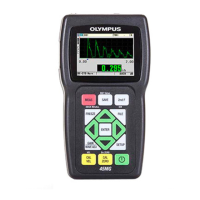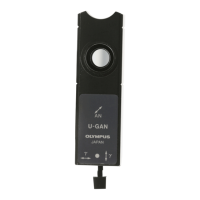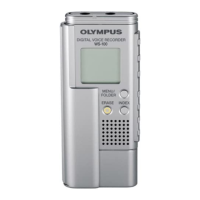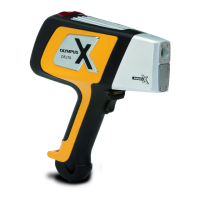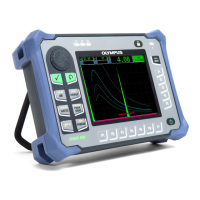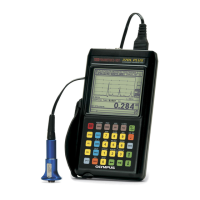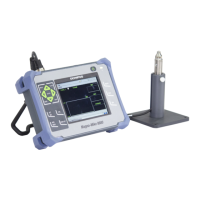DMTA-10043-01EN, Rev. C, July 2016
Chapter 10
66
10.3 High Temperature Measurements
Corrosion measurements at elevated temperatures require special consideration.
Keep in mind the following points:
• Be sure that the surface temperature of the test piece does not exceed the
maximum specified temperature for the transducer and couplant that you are
using. Some duals are designed for room temperature measurements only.
• Use a couplant rated for the temperature where you will be working. All high
temperature couplants will boil off at some temperature, leaving a hard residue
that is not able to transmit sound energy. Olympus Couplant (H-2) can be used at
temperatures up to 398 °C (750 °F), although it will boil as the upper limit is
reached.
Maximum recommended temperatures for Olympus couplants are provided in
Table 7 on page 66.
Not all types of couplant are available in every country due to local regulation.
Consult your local Olympus representative for a list of available couplants.
• Make measurements quickly and allow the transducer body to cool between
readings. High temperature duals have delay lines made of thermally tolerant
material, but with continuous exposure to very high temperatures the inside of
the probe will heat to a point where the transducer will be permanently damaged.
Table 7 Couplant selection
Couplant Type
Maximum
recommended
temperature
B Glycerine 90 °C (200 °F)
D Gel 90 °C (200 °F)
H-2 High
Temperature
Up to 398 °C (750 °F)

